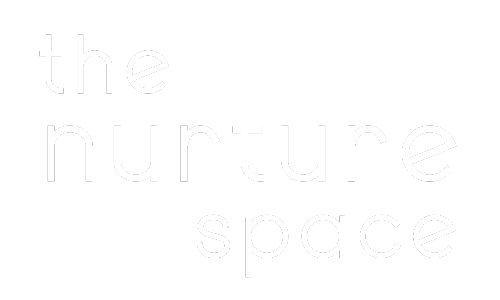How Somatic Therapy Supports Healing from Anxiety and Depression
Understanding Somatic Therapy for Anxiety and Depression

Discover how somatic therapy can help reduce symptoms of anxiety and depression by working with the body, not just the mind. Learn trauma-informed, nervous-system-based tools for lasting emotional well-being.
Understanding Somatic Therapy for Anxiety and Depression
Anxiety and depression are two of the most common mental health challenges in our modern world. They’re often treated with a combination of talk therapy and medication. While these can be helpful, they don’t always get to the root of why the nervous system remains stuck in patterns of hyperarousal (as seen in anxiety) or hypoarousal (as seen in depression). That’s where somatic therapy comes in.
Somatic therapy is a holistic, body-based approach to healing that addresses the physical manifestations of stress, trauma, and emotional pain. It works with the nervous system to support regulation, release stored trauma, and help clients reconnect to a sense of safety in their bodies.
For those living with chronic anxiety or depression, somatic therapy offers a path toward healing that goes beyond insight and cognition. It invites the body into the therapy process—allowing healing to unfold on a deeper level.

How the Body Stores Stress and Emotional Pain
When we experience overwhelming events—whether single-incident traumas or the slow accumulation of stress over time—our nervous system kicks into survival mode. In moments of threat, our bodies may respond by fighting, fleeing, freezing, or fawning. These are adaptive responses designed to keep us safe.
The issue arises when the body doesn’t get the chance to fully discharge that survival energy. Instead, it can become stuck in a state of chronic tension or collapse, which over time may contribute to symptoms of anxiety and depression.
Some ways the body stores stress and trauma:
• Chronic muscle tension (especially in the shoulders, jaw, or gut)
• Shallow or irregular breathing
• Digestive disturbances
• Fatigue, brain fog, or a heavy, lethargic body
• Racing heart or panic sensations
• Emotional numbness or disconnection from sensations
These symptoms are not "in your head"—they’re messages from your nervous system. Somatic therapy provides a way to listen, respond, and gently support your system toward balance.
What Is Somatic Therapy?
Somatic therapy, also known as somatic experiencing or body-oriented psychotherapy, is grounded in the understanding that trauma and emotional distress live in the body—not just the mind. It integrates body awareness, gentle movement, and nervous system tracking to help clients resolve stored survival energy and return to a state of regulation.
Unlike traditional talk therapy, which often focuses on narrative and cognitive processing, somatic therapy emphasizes the felt sense—a term coined by Eugene Gendlin to describe our internal bodily awareness. This felt sense acts as a guide, helping therapists and clients navigate the healing process through what’s actually happening in the body in the present moment.

How Somatic Therapy Helps with Anxiety
Anxiety is a state of nervous system activation—often linked to a perception of threat. In somatic terms, this looks like being stuck in sympathetic nervous system arousal, where the body prepares to fight or flee. When unresolved, this state can become chronic, leading to persistent worry, tension, and restlessness.
Somatic therapy supports clients with anxiety by:
• Helping them notice and name physical sensations of activation
• Slowing down the body’s stress response through breath and grounding
• Teaching tools to down-regulate the nervous system
• Supporting completion of interrupted fight/flight responses
• Building capacity to tolerate uncomfortable sensations without overwhelm
These practices help shift the body from a chronic state of vigilance into a more flexible, regulated state—one where calm, curiosity, and connection become more available.
How Somatic Therapy Supports Depression
Depression, from a somatic perspective, is often linked to a freeze or shutdown response in the nervous system. When stress becomes too overwhelming or prolonged, the body may respond by collapsing or numbing out. This can manifest as:
• Low energy and fatigue
• Disconnection from joy or purpose
• Difficulty initiating or completing tasks
• Numbness or a sense of being "far away"
Somatic therapy supports depression by gently reawakening the nervous system, helping clients:
• Connect with internal sensations in a safe, titrated way
• Use micro-movements and gentle activation to restore energy
• Re-establish a sense of rhythm and flow in the body
• Explore emotions through movement, breath, and expression
Rather than pushing or forcing change, somatic therapy meets clients exactly where they are—supporting gradual shifts in vitality and emotional responsiveness.

The Role of the Polyvagal Theory in Somatic Therapy
One of the key frameworks that informs somatic therapy is Polyvagal Theory, developed by Dr. Stephen Porges. This theory explains how our autonomic nervous system continuously scans for safety or danger and responds accordingly.
According to Polyvagal Theory, we move through three primary states:
1. Ventral Vagal (Safety & Connection): Calm, regulated, socially engaged
2. Sympathetic (Mobilisation): Fight or flight, anxiety, agitation
3. Dorsal Vagal (Shutdown): Freeze, numbness, depression, dissociation
In somatic therapy, we work to support movement toward the ventral vagal state—helping clients experience safety, connection, and a sense of internal balance. Importantly, we don’t pathologize protective states like freeze or fight; instead, we explore them as adaptive responses that once served a purpose.
Somatic Techniques Used in Therapy for Anxiety and Depression
Somatic therapy sessions may include a variety of body-based interventions, such as:
• Grounding Practices: Orienting to the present moment using the five senses
• Breathwork: Learning to engage the breath in ways that soothe or activate
• Tracking Sensations: Noticing shifts in temperature, tightness, or movement
• Titration: Exploring emotions or memories in manageable doses
• Pendulation: Moving between states of regulation and activation to build capacity
• Movement and Posture: Exploring how body positions influence emotional states
• Touch or Somatic Resourcing (where appropriate): Gentle, consent-based touch or imagery to increase safety
These tools are always offered with care, consent, and sensitivity to trauma histories.

Trauma-Informed Somatic Therapy: Why Safety Comes First
If you live with anxiety or depression rooted in past trauma, the idea of reconnecting with your body might feel daunting or unsafe. Somatic therapy honours this. A trauma-informed approach means we go slowly. We prioritise trust, titration, and choice.
A skilled somatic therapist will:
• Respect your boundaries and work at your pace
• Support you in developing inner resources before exploring distressing material
• Help you track and understand your nervous system patterns
• Never force or push your body beyond its capacity
The goal isn’t to "fix" you—it’s to help your system feel safe enough to begin healing.
The Long-Term Benefits of Somatic Therapy for Anxiety and Depression
Somatic therapy isn’t a quick fix, but it can lead to profound, lasting changes. Over time, clients often notice:
• A more regulated and resilient nervous system
• Decreased frequency and intensity of anxiety or depressive episodes
• Increased ability to be present in the moment
• Greater self-compassion and body awareness
• Reconnection with joy, creativity, and aliveness
Most importantly, many clients describe a shift from surviving to thriving—a sense that life no longer feels like something to endure, but something they can meaningfully engage with.
Is Somatic Therapy Right for You?
You don’t need to have a formal trauma history to benefit from somatic therapy. Whether you’re:
• Managing ongoing anxiety or low mood
• Feeling disconnected from your body or emotions
• Looking for tools to support nervous system regulation
• Ready to explore healing beyond talking alone
…somatic therapy can offer a compassionate, embodied path forward.
You deserve to feel at home in your body.
At The Nurture Space, I offer trauma-informed somatic therapy for individuals navigating anxiety, depression, stress, and relational wounds. Sessions are designed to support your unique nervous system and honour the wisdom of your body.
If you’re ready to begin or want to learn more, I invite you to explore my site or reach out to book an initial consultation.



